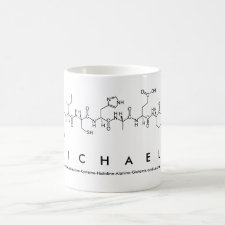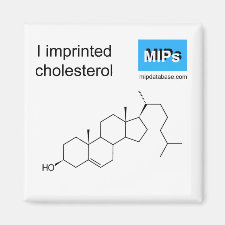
Authors: Pérez N, Whitcombe MJ, Vulfson EN
Article Title: Surface imprinting of cholesterol on submicrometer core-shell emulsion particles.
Publication date: 2001
Journal: Macromolecules
Volume: 34
Issue: (4)
Page numbers: 830-836.
DOI: 10.1021/ma001079v
Abstract: Submicrometer surface-imprinted particles were prepared by a two-stage aqueous emulsion polymerization with a poly(divinylbenzene) shell over a cross-linked poly(styrene) core. The second stage polymerization was performed in the presence of a polymerizable surfactant (pyridinium 12-(4- vinylbenzyloxycarbonyl)dodecanesulfate, PS) and pyridinium 12- (cholesteryloxycarbonyloxy)dodecanesulfate (TS), which acted both as a surfactant and as a template. Removal of the template left hydrophobic cavities on the surface of charged particles or particles bearing benzyl alcohol groups, dependent on the protocol adopted. Particles were shown to rebind cholesterol in 60% a-propanol in water, and a poly(ethylene glycol) (PEG) modified with cholesterol at both chain ends was capable of flocculating the imprinted particles. No flocculation was seen either when a monocholesteryl PEG was used or when nonimprinted particles were used



Join the Society for Molecular Imprinting

New items RSS feed
Sign-up for e-mail updates:
Choose between receiving an occasional newsletter or more frequent e-mail alerts.
Click here to go to the sign-up page.
Is your name elemental or peptidic? Enter your name and find out by clicking either of the buttons below!
Other products you may like:
 MIPdatabase
MIPdatabase









